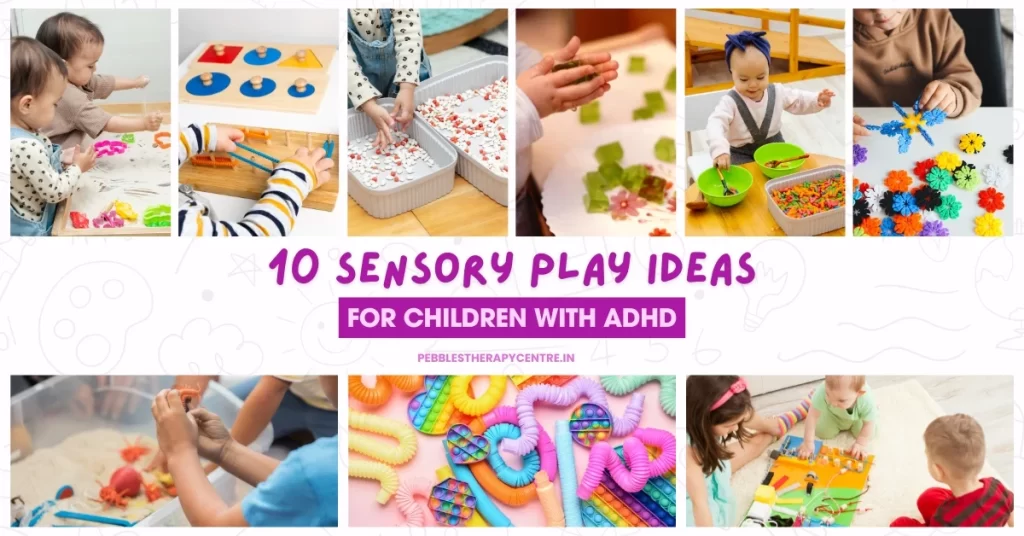10 Sensory Play Ideas for Children with ADHD
Children with ADHD can often struggle with sensory processing, which can lead to challenges with focus, attention, and behavior. Sensory play is a type of play that engages the five senses, and it can be a great way to help children with ADHD learn to self-regulate and manage their sensory needs. In this article, we will provide 10 sensory play ideas that can be helpful for children with ADHD.
10 Sensory Play Ideas for Children with ADHD & How It Benefits
Sensory strategies for ADHD encompass tailored interventions, incorporating activities like fidget tools, movement breaks, and sensory-rich environments, to empower individuals in managing attention, improving focus, and fostering self-regulation.
Hence, Sensory play is an important part of development for all children, but it can be especially beneficial for children with ADHD. Sensory play can help children with ADHD to:
- Improve their focus and concentration. Sensory activities can help children with ADHD to filter out distractions and focus on the task at hand.
- Regulate their emotions. Sensory Activities for Preschoolers can help them to calm down when they are feeling overwhelmed or anxious during school time.
- Develop their motor skills. Sensory activities can help children with ADHD develop their fine and gross motor skills.
- Learn about their senses. Sensory activities can help children with ADHD learn about their senses and how to manage them.
There are many different sensory play activities that you can do with your child with ADHD. Continue reading to learn more about Sensory Play Ideas.
Sensory Bin
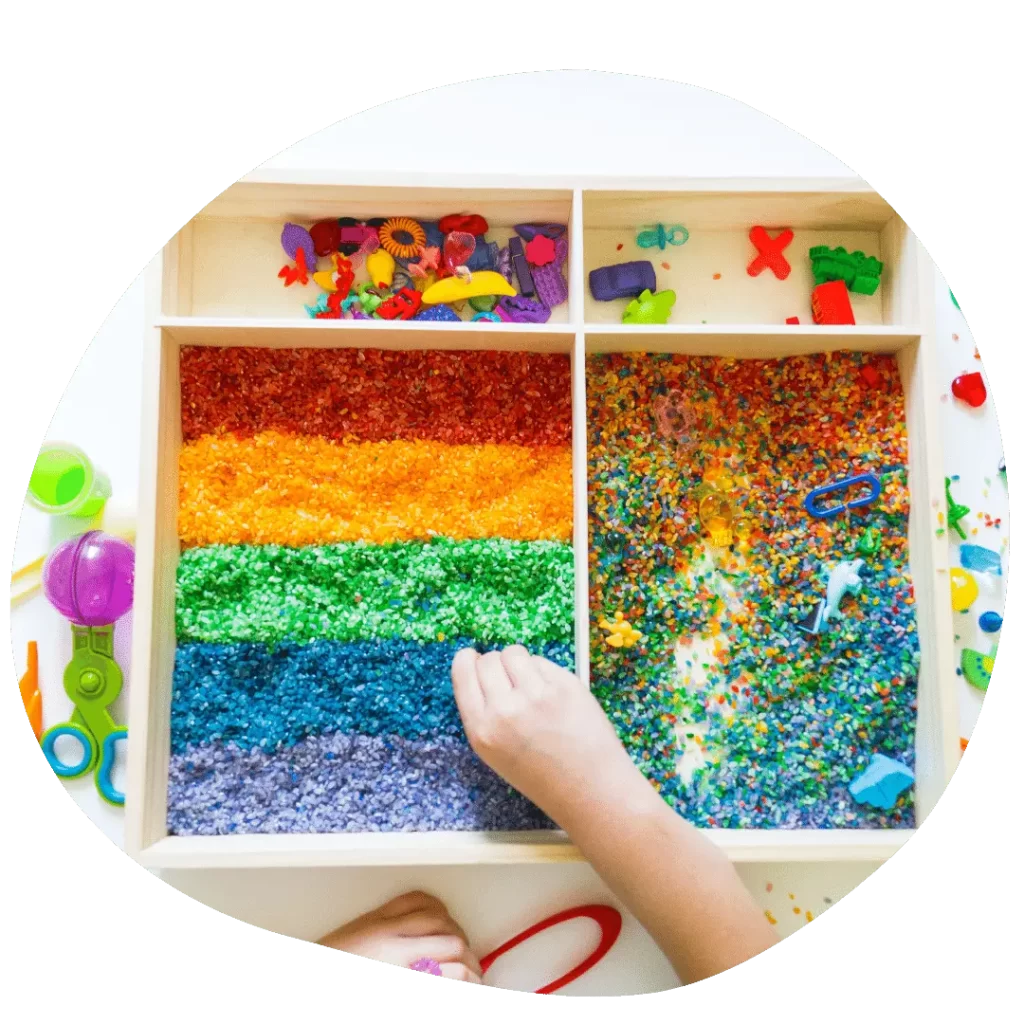
An assortment of various textured objects, such as grains, beans, pasta, or sand, are placed inside a sensory bin. Children can explore the bin with their hands, feet, and other senses.
How It Benefits
- Helps develop fine motor skills
- Encourages sensory exploration
- Promotes creativity and imagination
Playdough
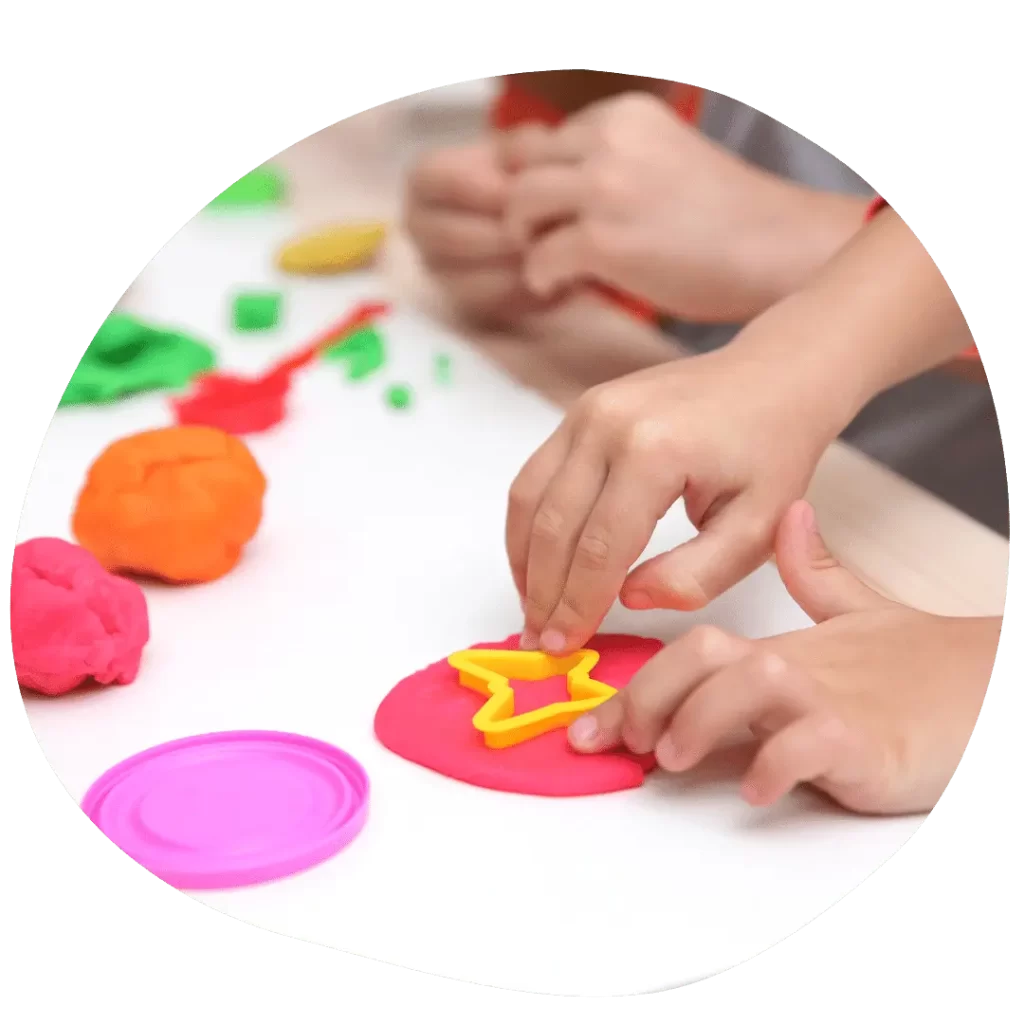
Playdough is a soft, pliable material that can be molded and shaped into different forms. It is one of the Non Messy Sensory Play Ideas in which children uses playdough to make animals, people, objects, or anything else they can imagine.
How It Benefits
- Strengthens hand and finger muscles
- Enhances creativity and imagination
- Improves fine motor skills
Water Play
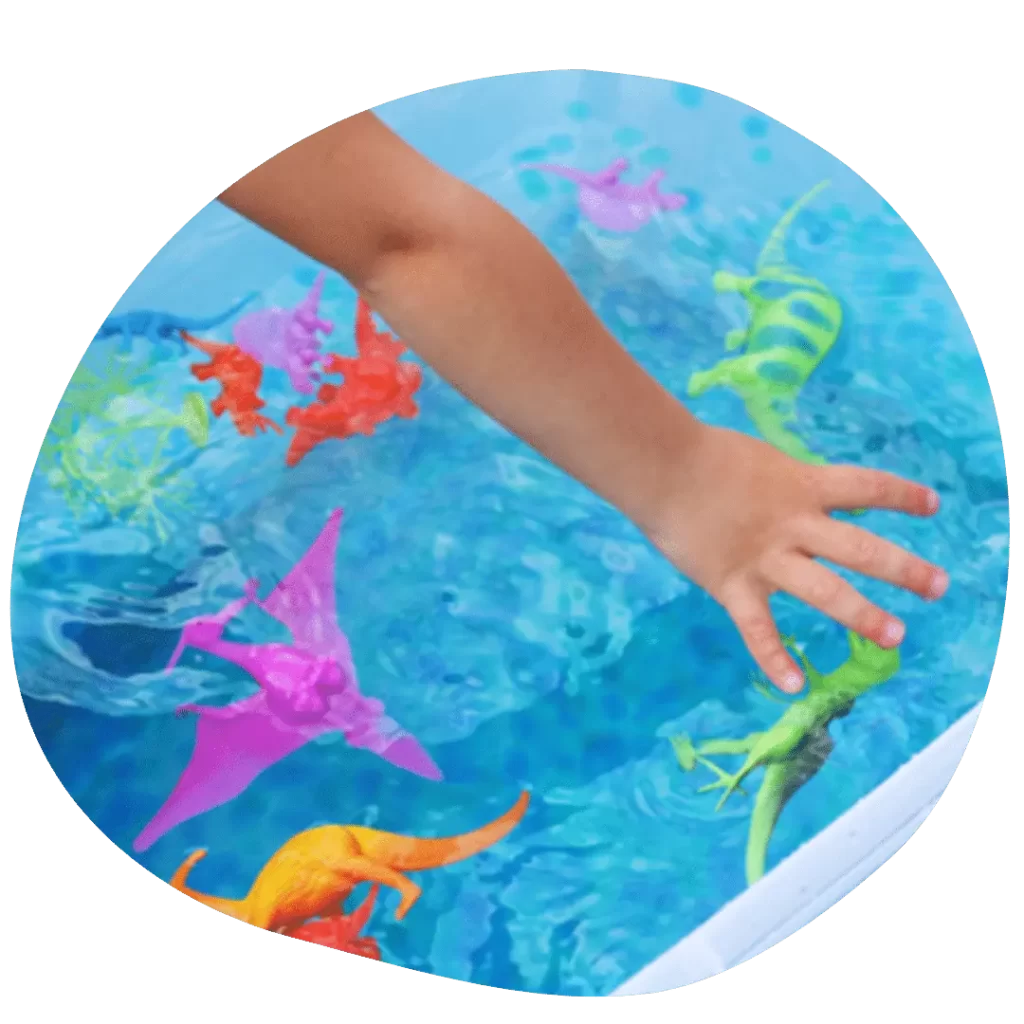
Water play can be anything from splashing in a bathtub to playing with a water sprinkler or hose. Children love to explore the different properties of water and how it can be manipulated.
How It Benefits
- Develops gross motor skills
- Encourages sensory exploration
- Promotes creativity and imagination
Kinetic Sand
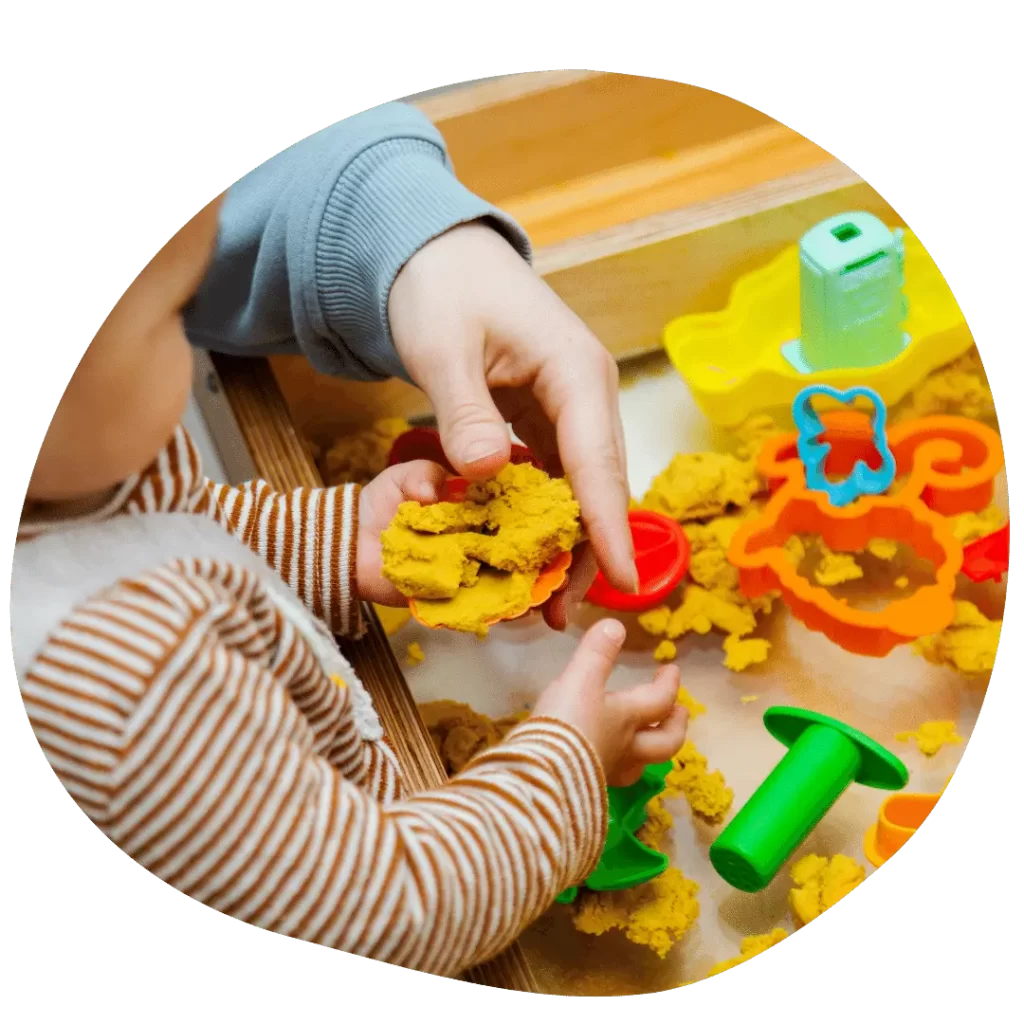
Kinetic sand is a type of sand that sticks to itself and can be molded into different shapes. For kids who want to play with their senses, this is an excellent tactile toy.
How It Benefits
- Calming and relaxing
- Encourages sensory exploration
- Promotes creativity and imagination
Sound Tubes
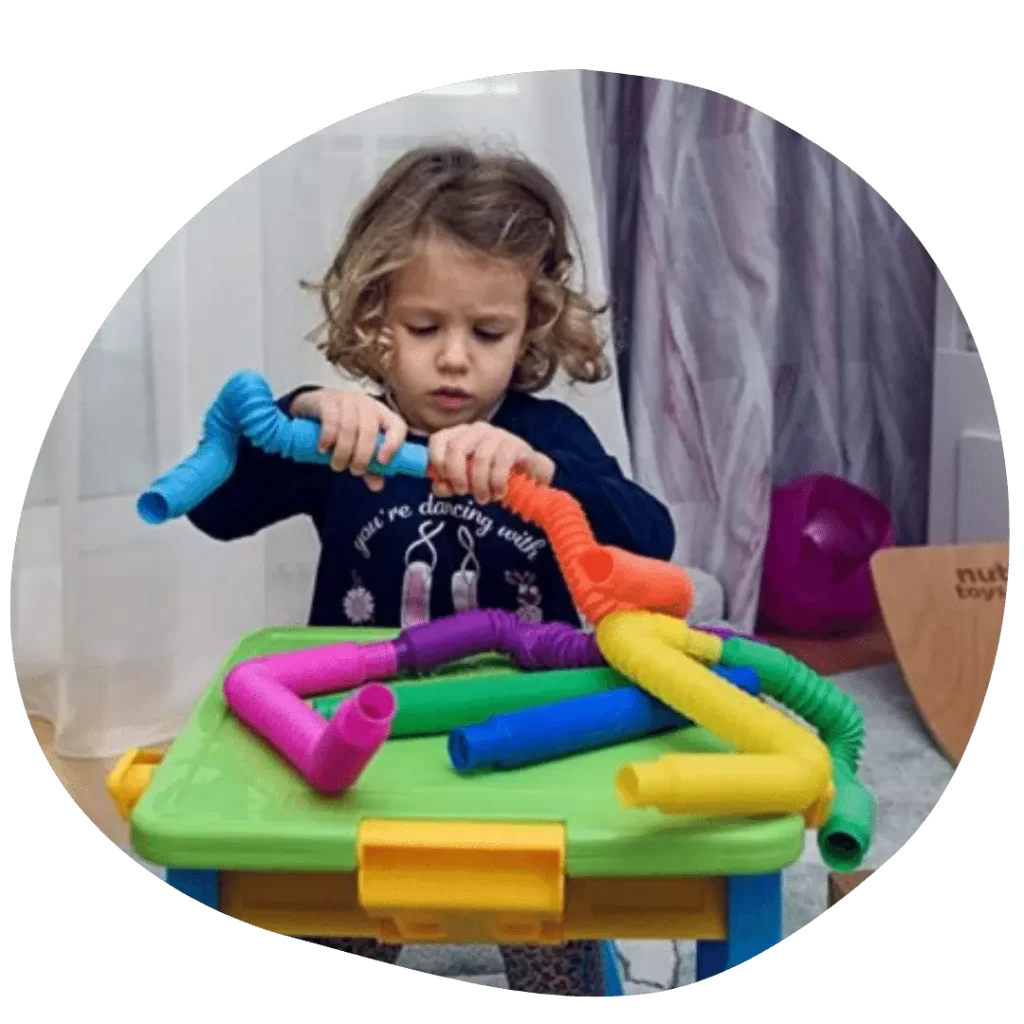
Sound tubes are long, hollow tubes that make different sounds when you tap on them or blow through them. Children love to explore the different sounds that sound tubes can make.
How It Benefits
- Introduces different sounds and textures
- Encourages auditory exploration
- Promotes language development
Bubble Play
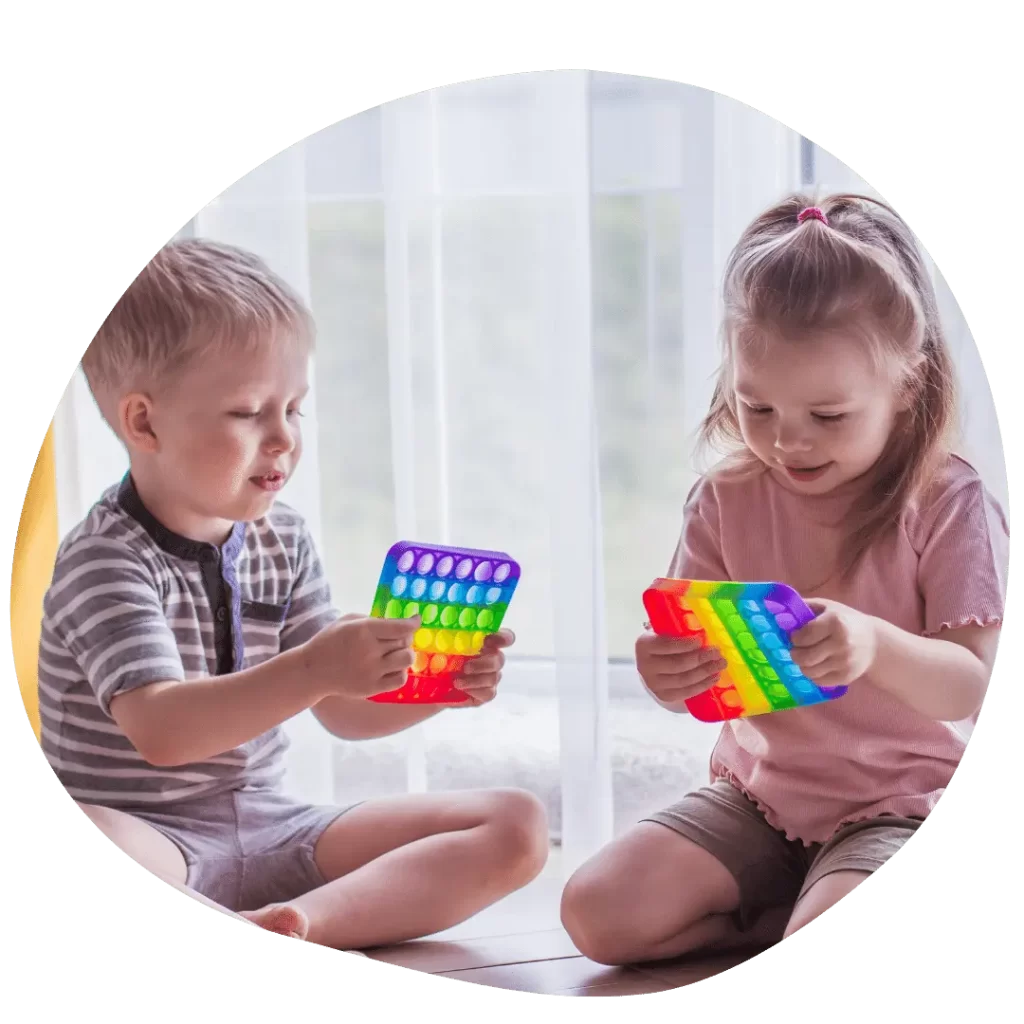
Bubble play is a classic childhood activity that is always a hit with children. Kids adore chasing and popping bubbles, as well as playing with various bubble-making techniques.
How It Benefits
- Encourages gross motor skills
- Promotes visual tracking
- Offers a captivating and enjoyable sensory experience
Balance Beam
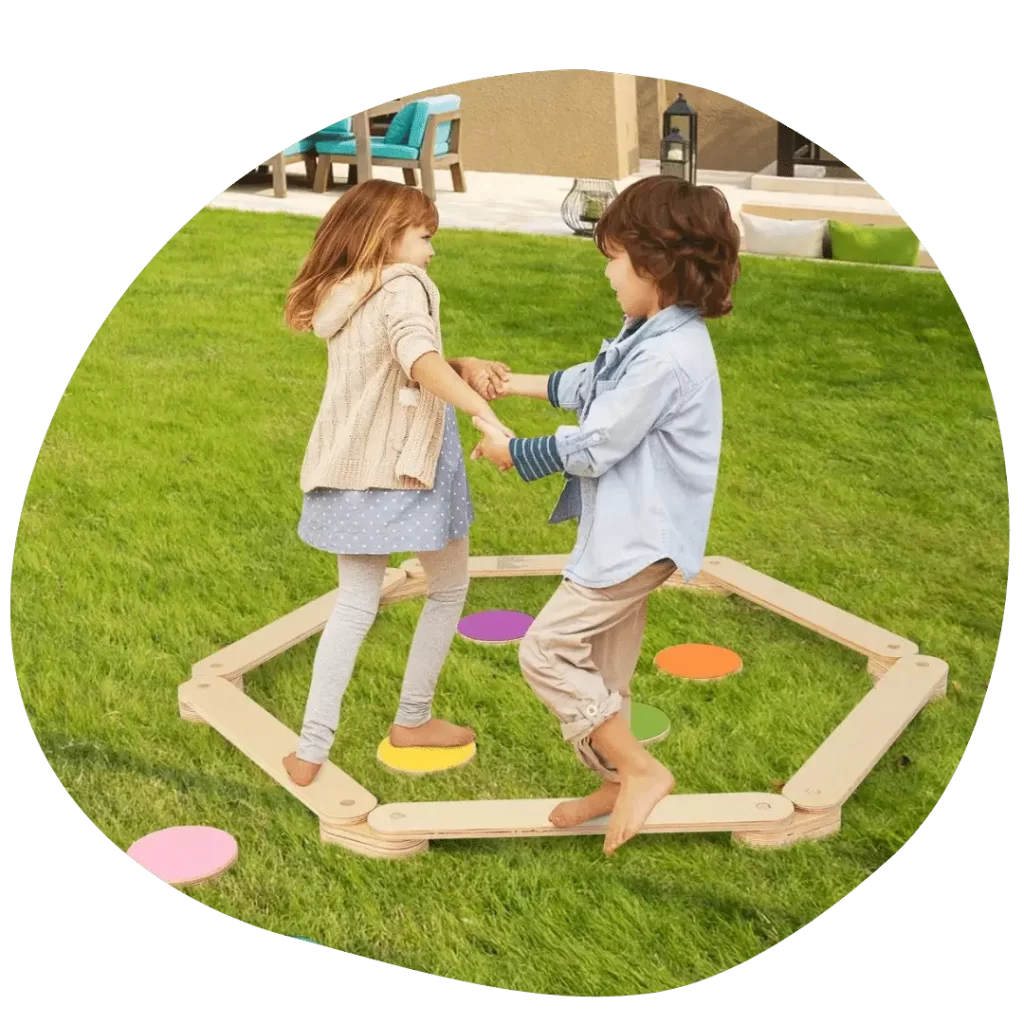
For children to train their balance, there is a thin beam called a balance beam. This is one of the Sensory Play Ideas that is practised commonly for 1 Year Olds. Balance beams made from a variety of materials, such as wood, foam, or plastic.
How It Benefits
- Improves balance and coordination
- Strengthens leg muscles
- Enhances gross motor skills
Weighted Blanket
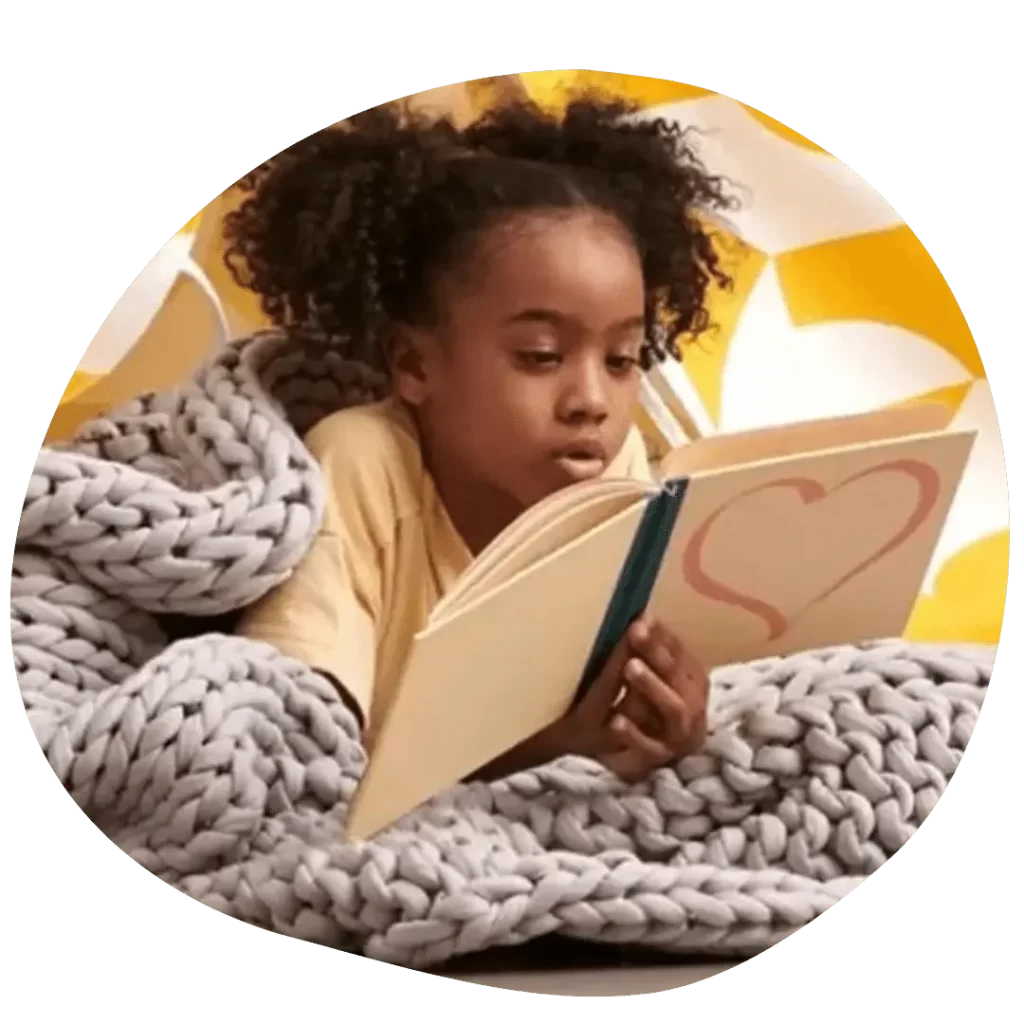
A weighted blanket is a heavy blanket that is used to provide a deep pressure touch. For kids with sensory processing problems, deep pressure touch can be soothing and relaxing.
How It Benefits
- Calming and relaxing
- Reduces anxiety and stress
- Promotes better sleep
Swinging

Swinging is a great way for children to get vestibular input, which is the sense of movement and balance. For kids who struggle with sensory processing, vestibular input might be beneficial.
How It Benefits
- Improves balance and coordination
- Provides vestibular input
- Calming and relaxing
Massage
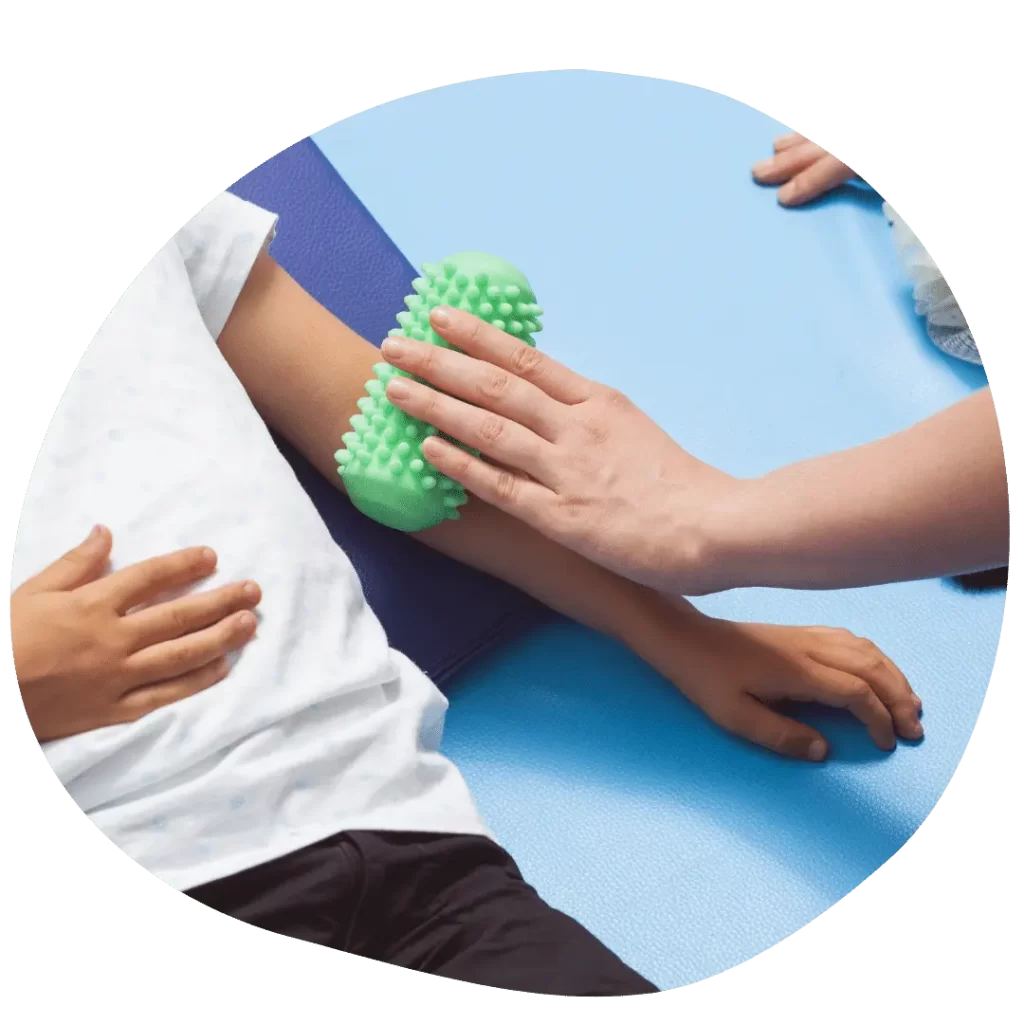
Massage is a great way to provide tactile input and relaxation for children. Additionally, massage can aid in reducing muscle tension and enhancing circulation.
How It Benefits
- Calming and relaxing
- Provides tactile input
- Improves circulation and muscle tone
How Sensory Play Helps Your Child with ADHD
Sensory play is a type of play that engages a child’s five senses: sight, touch, taste, smell, and hearing. It’s a valuable tool for all children, but it can be especially beneficial for children with attention deficit hyperactivity disorder (ADHD).
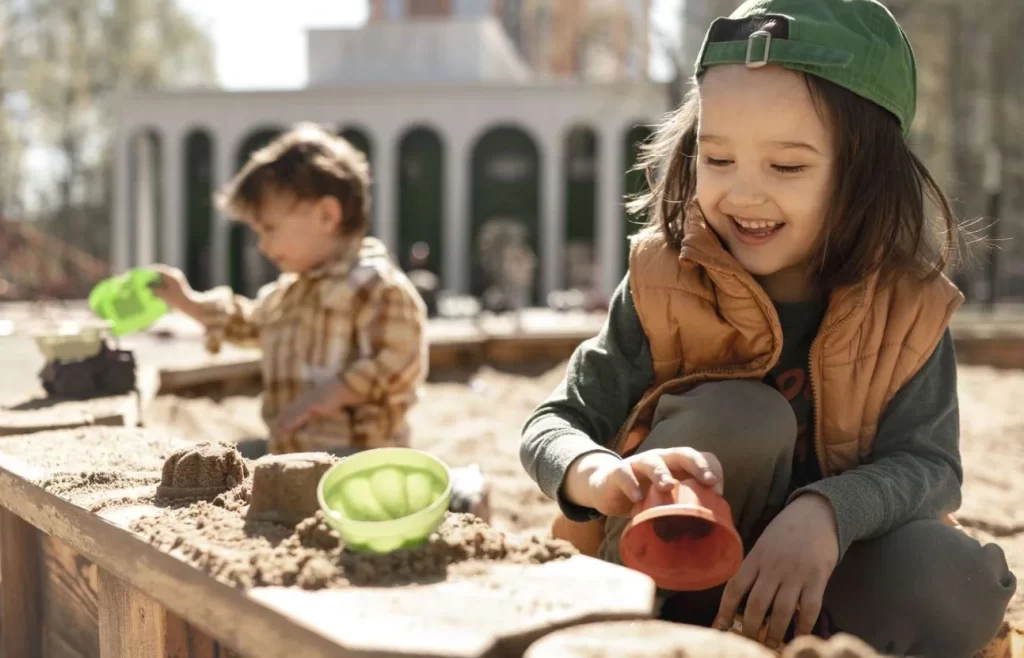
Sensory play can help children with ADHD in several ways:
- Focus and concentration: Sensory play can help children with Attention-deficit/hyperactivity disorder filter out distractions and focus on the task at hand.
- Emotional regulation: Sensory play can help children with Attention-deficit/hyperactivity disorder calm down when they are feeling overwhelmed or anxious.
- Motor skills development: Sensory play can help children with ADHD develop their motor skills, such as hand-eye coordination and balance.
- Sensory processing: Sensory play can help children with Attention-deficit/hyperactivity disorder learn how to manage their senses, such as touch and sound.
- Social interaction: Sensory play can help children with ADHD develop their social skills, such as taking turns and sharing.
Here are some tips for sensory play with children with ADHD:
- Start with short sessions.
- Provide a variety of sensory experiences.
- Recognize the sensory clues that your kid uses.
- Make sensory play enjoyable and fulfilling.
These therapeutic activities benefit children with ADHD by improving their attention, emotional management, and general well-being in addition to meeting their specific sensory demands. With a little creativity and persistence, you may find sensory play activities that your ADHD kid will love.
FAQs
Toys with various textures, colors, and sounds stimulate a baby’s senses, promoting sensory exploration and cognitive development. They promote general sensory integration, visual and auditory processing, and fine and gross motor abilities.
Difficulties in organizing and reacting to sensory information are associated with sensory processing disorders. Traits include overreacting or underreacting to stimuli, difficulty with coordination, poor attention, and heightened sensitivity to sensory input like touch, taste, or sound. This can be overcome with Sensory Integration Therapy Activities which includes Sensory Plays.
Assessing a child’s reaction to different stimuli is part of a sensory examination. Professionals may use standardized tools, observations, and interviews to evaluate sensory processing abilities. This helps identify strengths and challenges in sensory processing.
Yes, fidget toys can enhance proprioception, the sense of body awareness and movement. They provide tactile input and proprioceptive feedback, aiding individuals, including children, in regulating their sensory systems and improving focus and attention.
Yes, motor skills can be affected by Sensory Processing Disorder. Challenges in processing sensory information may lead to difficulties in coordination, balance, and motor planning. Children with SPD might benefit from focused exercises and occupational therapy for sensory issues in order to enhance their motor abilities.

